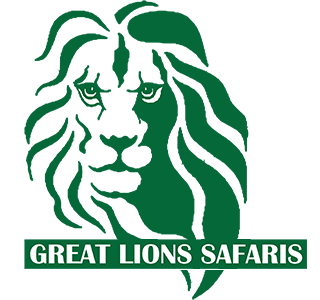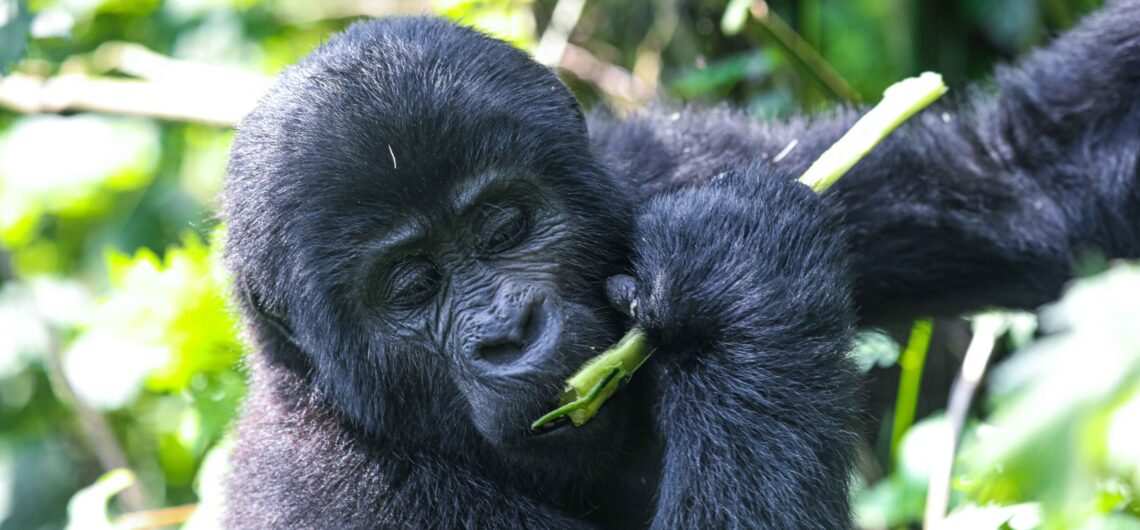One of the few locations worldwide where one may enjoy the excitement of mountain gorilla trekking in their native environment is Uganda.
Surrounded by the magnificent splendor of deep rainforests and challenging terrain, a gorilla trekking safari in Uganda provides a unique and remarkable meeting with these amazing animals. From travel preparation to what to anticipate on your adventure, this book addresses everything you need to know.
Why should one choose Uganda for Gorilla Trekking?
Along with Rwanda and the Democratic Republic of Congo, Uganda is one of only three nations worldwide where mountain gorillas are found. Still, Uganda ranks as a top gorilla trekking location for a number of reasons.
Affordability: Uganda has more reasonably priced gorilla trip permits than Rwanda. While in Rwanda it is $1,500, in Uganda a gorilla permit is $800.
Nearly half of the surviving mountain gorillas worldwide live in Bwindi Impenetrable National Park found in Uganda. With more than 20 habituated gorilla families in the park, obtaining permits becomes simpler and provides additional trekking choices for tourists.
From the rocky, foggy highlands of Bwindi to the bamboo-covered slopes of Mgahinga Gorilla National Park, Uganda’s gorilla trekking areas provide not only great animals but also breathtaking and diverse scenery.
Best Time to Travel Gorilla Trekking in Uganda
Although gorilla trekking is possible all year round, Uganda has two primary seasons for trekking.
June through September and December through February constitute the dry season.
For gorilla trekking in Uganda, the most sought-after season is dry one. The paths are drier at this season, which lessens the effort of the walk. Better weather also improves your whole experience so you may savor the natural splendor of the trees.
The rainy season brings rain, which muck the paths and increase their difficulty to negotiate. Still, the rainforests are lushest and provide breathtaking vistas, there are few visitors. Also simpler to get at this time are gorilla permits; certain lodges could have reduced fees.
Where in Uganda may one go for Gorilla Trekking?
Two significant gorilla trekking sites in Uganda provide different qualities.
With about half of the world’s mountain gorillas living there , Bwindi Impenetrable National Park Overview is Uganda’s most well-known gorilla trekking destination. Provoking a real jungle experience, the park covers more than 331 square kilometers of rich, hilly rainforest.
Four hiking areas—Buhoma, Ruhija, Nkuringo, and Rushaga—each with their own habituated gorilla families—divide Bwindi. This allows hikers great freedom in selecting their route of travel.
Expect difficult trekking in Bwindi as the ground is steep and the flora is dense. Still, the effort is well worth it when one sees a family of gorillas in the wild.
Mgahinga is part of the Virunga Mountain Range spanning Uganda, Rwanda, and the Democratic Republic of Congo situated far southwest of Uganda. Although Mgahinga is smaller than Bwindi, it provides a different experience particularly for people who like walking across volcanic settings.
Mgahinga is home to the only habituated population in the park—the Nyakagezi gorilla family. Less crowded treks here provide a closer contact.
Mgahinga adds even more value to your gorilla trekking trip by providing chances for volcano climbing and cultural encounters with the Batwa pygmies.
How to get Ugandan Gorilla Trekking Permits?
You have to have a gorilla trekking permit before you can spend one hour with a mountain gorilla family. Uganda grants a small daily permit count to help to reduce the burden on the gorillas and their environment.
A gorilla trekking permit in Uganda is $800. This charge covers park admission, tour fees, and conservation projects.
Either the Uganda Wildlife Authority (UWA) or Great Lions Safaris may handle permits. Book much in advance, particularly if you want to hike during the busiest dry seasons as permits sell fast.
Uganda also provides a special gorilla habituation experience in Bwindi’s Rushaga area wherein guests may spend up to four hours with semi-habituated gorilla families. For those who like to see the gorillas closer-knit, this $1,500 excursion is perfect.
Expectations on a Gorilla Trekking Day
Typical gorilla trekking days begin early in the morning. The following summarizes what to expect.
One should brief and assign groups based on
You’ll arrive at the park headquarters for a briefing before to the trip. Park rangers will go over the gorilla habits, safety precautions, and trekking policies. Following the briefing, you will be allocated a gorilla family and a trekking group—typically eight people per.
Depending on where the gorillas live, the trip could take anywhere between one and six hours. Your guide will provide observations on the plants and creatures around you as you travel throughout the deep jungle. Be ready for a physically tough trip; the terrain may be difficult with steep hills, muddy paths, and heavy foliage.
Once you find the gorilla family, you have one hour to see them from a safe distance—typically seven meters. You will see their social interactions, eating, and grooming practices during this period. Being so close to these amazing animals in their natural habitat is just breathtaking.
You will return to your resort after your hike so you may unwind and consider the amazing journey. Many lodges provide spa treatments and other conveniences to help you relax after a hard day in the bush.
What Should I Bring for a Gorilla Trekking Trip to Uganda?
A good journey depends on packing the correct equipment. These are some really necessary items.
Make sure your shoes have adequate ankle support and grip as the paths could be muddy and uneven.
In the rainforest, rain showers are somewhat frequent even during the dry season. Essential are light, waterproof jacket and trousers.
Long-sleeved shirts and pants protect your skin from stinging plants, bug bites, and branch scrapes.
Garding gloves help you to hold onto branches and vines as you negotiate the ground.
On steep and slick routes, Trekking Poles may provide stability.
Carry your water, food, camera, and rain gear in a little, cozy backpack called a daypack.
Mosquitoes are among the many insects that call the rainforest home.
Remember additional batteries and memory cards to record your amazing gorilla encounter.
Physical Development and Getting Ready
Given Uganda’s steep topography and dense flora of its rainforests, gorilla trekking may be physically taxing. Here’s how you get ready.
Though a modest degree of fitness is advised, you do not have to be an athlete. Before your vacation, including walking or trekking to be ready for the climb.
Take time to adjust if necessary; certain hiking sites—especially in Bwindi—have greater heights.
Porters Since they can carry your bag and help you on the paths, hiring a porter—for a little cost—is a terrific way to help the local people and simplify your trip.
Other Pursues that Complement Gorilla Trekking
Although the highlight of a Uganda safari is frequently gorilla trekking, the nation offers much more. Think about including these pursuits on your schedule.
Uganda’s Kibale National Park is a great fit for your gorilla trekking safari as it boasts a sizable population of chimpanzees.
See the Big Five—lions, elephants, leopards, buffaloes, and rhinos—on Uganda’s savannas at Queen Elizabeth National Park or Murchison Falls National Park.
With more than 1,000 bird species to find—including the uncommon shoebill stork— Uganda is a birdwatcher’s dream come true.
Visit nearby towns to discover the many cultures of Uganda, including the Batwa pygmies who once resided in the Bwindi and Mgahinga jungles.
Witnessing one of the most threatened animals on Earth in its native environment is only once in a lifetime chance provided by a Uganda gorilla trekking safari. From getting licenses to getting ready for the trip, this complete guide offers all the knowledge you need to organize a great and unforgettable journey. Uganda’s stunning scenery and amazing animals will leave you with lasting memories regardless of your level of experience with travel or first wildlife safari.

